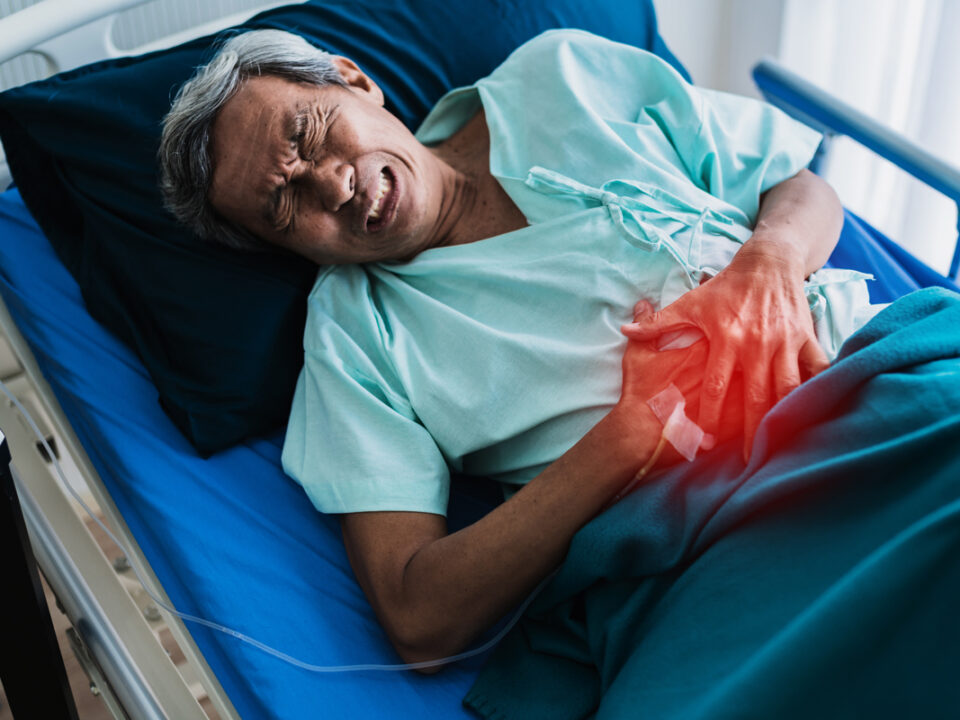
Role of Hyperbaric Oxygen Therapy in Autism
22/02/2024
Role of Hyperbaric Oxygen Therapy (HBOT) in Concussion Recovery
23/03/2024Diabetes kidney disease is a leading cause for end stage renal disease in the world. To date no treatment that can reverse renal damage exists.
Chronic hypoxia is one of the major key insults affecting the diabetic kidney, and many of the new treatments under, but no treatment can improve the hypoxia as both increased renal perfusion study focusses on its consequences and decreased renal perfusion may be associated with its worsening. Hyperbaric oxygen therapy (HBOT) can improve renal hypoxia by increasing partial pressure of dissolved (non-hemoglobin-bound) oxygen without affecting its demand. HBOT also recruits tissue and peripheral progenitors and supplies the optimal environment crucial for their proliferation and for tissue repair. Hyperbaric Oxygen treatment was known for years as an effective treatment for diabetic ulcers. Recent trials have shown great impact on brain lesions (in diabetic and non-diabetic patients) it is now the time to evaluate the effect of HBOT on the diabetic kidney. This is what HBOT India has to say.
Renal Disorders
The kidneys are two organs that resemble beans. Your kidneys produce urine while removing surplus water and waste from your blood. Your kidneys are harmed & unable to filter blood properly if you have renal disease. Due to the lack of available organ donors and therapies, renal disease and illness are global public health concerns. When kidney structures, such as nephrons, are unable to perform their duties, illnesses, and diseases like these develop.
This condition has the potential to progress to end-stage renal disease (ESRD), also known as kidney failure and characterized by the total loss of renal function. Malignant hypertension, hyperglycemia, glomerular, tubular, and interstitial disorders are additional prevalent conditions. Dialysis or a kidney transplant has historically been used to treat renal illnesses like ESRD. But there is a disparity between the number of patients who need therapy and the readily available medicines. Lakhs of people die annually because of inadequate dialysis and a lack of transplant-able kidneys. A fresh possibility in this horrifying reality is made apparent by the prospect of kidney tissue regeneration.
Symptoms
Early warning indications of potential renal disease include the symptoms listed below:
- Trouble sleeping
- Loss of appetite
- Cramps in the muscles
- Swelling in the ankles and feet
- Excessive urination, especially late at night
Significant indicators indicating kidney failure is developing because of your kidney illness include:
- Nausea
- Vomiting
- Reduced appetite
- Shifts in urine production
- Anemia and fluid retention
- Hyperglycemia
- Pericardial inflammation
Renal Regeneration
Kidney regeneration enables the regrowth and repair of damaged renal structures, which restores function. Since nephrons originate during embryonic development, adult regeneration is not conceivable. Animal models help us to comprehend neon pro genesis, a process that culminates in the development of new nephrons. Human pluripotent stem cell research on kidney pathogenesis and identification of these animal models have improved the development of kidney cells. Both human and animal models are now being used to study stem cells. If you have diabetes or high blood pressure, you are more likely to develop renal disease. Dialysis or a kidney transplant are available as therapies for renal failure. Acute renal damage, kidney cysts, kidney stones, and kidney infections are a few other kidney issues.
End Stage Renal Disease
End-Stage Renal Disease (ESRD) is a medical illness in which a person’s kidneys stop working permanently, necessitating either a kidney transplant or a continuous course of long-term dialysis to sustain life. A type of renal replacement therapy is dialysis. Artificial machinery is used to augment the kidney’s function of filtering the blood to remove extra water, solutes, and poisons. When a person has acute kidney injury (AKI), which is characterized by a sudden loss of kidney function, or chronic kidney disease, which is characterized by a slow, progressive loss of renal function, dialysis ensures the maintenance of homeostasis (a stable internal environment) (CKD, previously end-stage renal disease, ESRD). In 2010, over 2.5 million individuals got chronic renal replacement treatment (RRT). It is the cornerstone of the care of end-stage renal disease, a kidney ailment with an increasing global burden mostly caused by diabetes mellifluous (45%) and hypertension (30%). Dialysis, peritoneal dialysis, & filtration are the three main forms of dialysis.
Hemodialysis
Hemodialysis involves pumping blood through a specialized device that removes waste materials and fluid. Hemodialysis can be conducted at home, in a hospital, or at a dialysis facility. The average person attends three sessions per week, each lasting between three and five hours. Hemodialysis can, however, also be performed more frequently and in shorter periods.
Most patients will undergo surgery to develop an arteriosclerosis (AV) fistula a few weeks before beginning dialysis. An artery and a vein are connected beneath the skin, usually in the forearm, to form an AV fistula. During hemodialysis treatment, the bigger blood artery enables a continuous flow of more blood across the body. This suggests that more blood can be cleaned and filtered. If an artery and vein cannot be connected, an arteriosclerosis graft (a looped, plastic tube) may be implanted and used for the same function. Low blood pressure, cramps, and itching are the most frequent hemodialysis adverse effects.
Hyperbaric Oxygen is Effective Medicine for Renal Regeneration in End Stage Renal Disease and Hemodialysis
By administering pure oxygen under high pressure, Hyperbaric Oxygen Therapy (HBOT) increases the amount of oxygen in the blood and tissues (hypoxia) (about 2-3 atmospheres). One kind of treatment involves exposing patients to pure oxygen (O2) concentrations at high atmospheric pressures, which is known as Hyperbaric Oxygen Therapy (HBOT). As per the Undersea and Hyperbaric Medical Society, this pressure may be greater than or equivalent to 1.4 atmospheres. For all current UH MS-approved usage, patients may only use oxygen when restrained in an environment with a minimum air pressure of 2 ATA. Hyperbaric medicine requires a pressure environment that is greater than the air pressure at sea level.
A 2015 study by Velma ET Al. explored the possibility that HBOT would lessen the kidney damage caused by diabetes by utilizing db/db mice, an obese, lepton deficient T2DM rodent model. This study investigated several different urinary biomarkers (NAC, NGAL, KIM1, CyC), which showed that 20 weeks of HBOT had an overprotective impact on renal tissue. HBOT specifically decreased the amounts of CyC in the urine, the biomarker most strongly associated with tubule function and a measure of glomerular filtration rate. This shows that tissue damage has been suppressed in both the proximal convoluted tubules and glimmering, maintaining kidney function as a result. Also discovered to be a particularly sensitive responder to HBOT is eutrophic gelatinous-associated lidocaine (NGAL), a renal marker of harm from ischemia and inflammation. Following HBOT, NGAL levels reduced, indicating a repair of the DKD-related early damage in this mouse model. When compared to untreated controls, HBOT at 2.4 ATA dramatically lowered the albumin to creation ratio in db/db mice, which is consistent with lessened agglomerate membrane damage. These findings were thought to be in line with the protection of the agglomerate filtration membrane in micro-vascular vessels.
Increased glucose levels in db/db mice cause the mitochondria, ER, and oxygen-consuming NADPH oxidase family enzymes to produce too much ROS. These ROS is responsible for the development of persistent inflammation, which can result in end-stage renal failure (ESRD). It is interesting to note that both hypoxia and HBOT cause an increase in ROS, which contributes to the psychopathology of DKD and the development of ESRD in some cases. To resolve this issue, Verma ET AL. (2015) propose that HBOT introduces oxygen-saturated blood into tissues, restoring normal oxygen levels and lowering endogenous, pathologic ROS generation. This may be achieved by limiting the overloading of electron carriers in the mitochondrial electron transport chain. By restoring normal oxygen levels in tissues and lowering the demand placed on electron carriers through tissue (mitochondrial) oxygenation, HBOT helps to minimize the generation of endogenous ROS and the quantity of pathological ROS. HBOT enhances mitochondrial function, which in turn restores tissue energetically to aid in healing by allowing oxygen to permeate damaged and diseased tissues.
Anaphylaxis is a syndrome of tiny artery calcification with an uncertain cause that results in painful lascivious skin lesions that proceed to non-healing ulcers and gangrene. It is also said calcify uremic cardiomyopathy. It is primarily seen in ESRD patients, with a reported frequency of 1-4% in those on chronic haemophilia. Five patients were given HBOT, two of whom were receiving chronic haemophilia and three of whom were receiving continuous ambulatory peritoneal dialysis (CAPD). Each patient received 25 to 35 doses of HBO2 at 2.5 atmospheres, each lasting 90 minutes. In conclusion, HBO2 treatment resulted in the full healing of the anaphylaxis lesions in two of the study’s five participants. Most anaphylaxis patients do not have uncontrolled hyperparathyroidism, which limits their treatment options. These findings imply that HBOT is risk-free and that it can be used to treat anaphylaxis.




